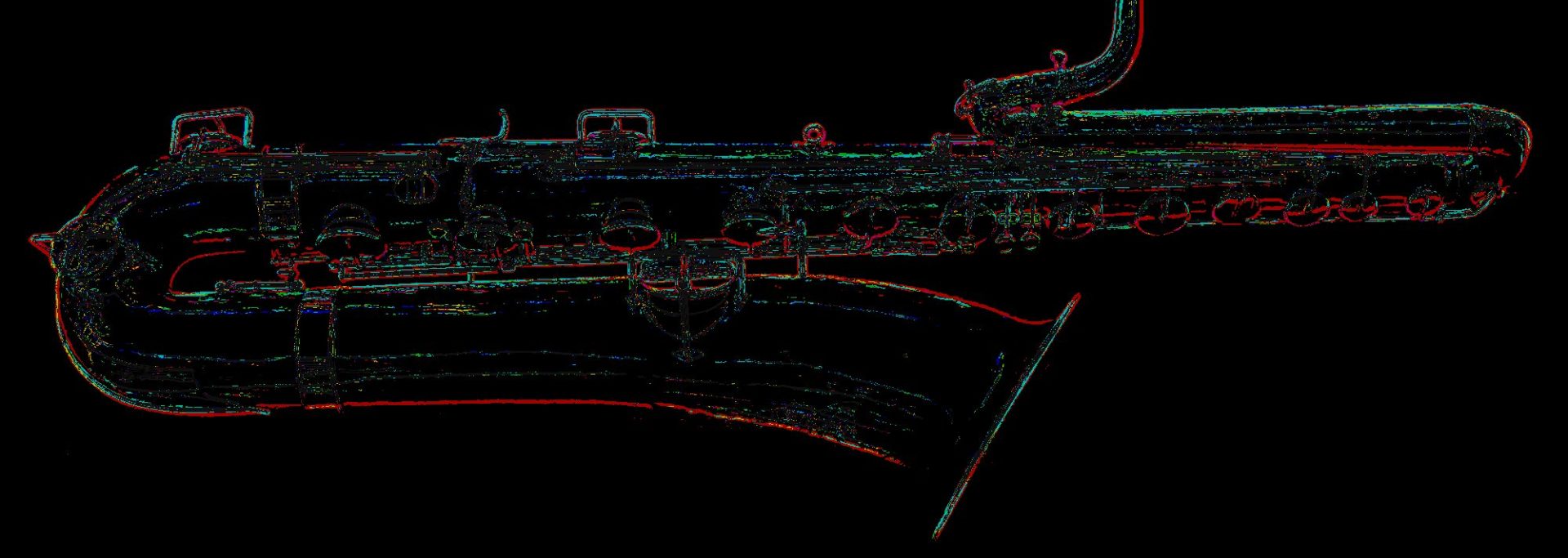If you were to Google sax mouthpiece diagram, or something else along those lines, you’d find quite a few different ones. Some are decent enough, but some are seriously lacking in the parts labelling department.
For years now I have always been relying on the diagrams of others when it comes to discussing mouthpieces. Well no more. Yesterday I spent a few hours putting together three different sax mouthpiece diagrams. These three diagrams provide a comprehensive overview of all the bits and areas that together form a very large part of our instrument’s sound.
How much of our saxophone’s sound comes from the mouthpiece? I’m not even going to hazard a guess when it comes to percentages. But we do know that the closer to the source of the sound—our chest cavity—the greater the effect changes to gear will have in altering our sound.
That’s why for example, a player using a Selmer C* mouthpiece will sound very different on the same horn, than he/she does when they use a Dukoff S7. (For a more complete discussion on this topic see my discussion on The Source of Tone.)
The mouthpiece on our instrument is what allows the player to project his/her tone through the horn itself. Without a mouthpiece we can’t do anything of course. If a mouthpiece has been damaged, or has been improperly manufactured or altered, its playability may be severely compromised.
My hope is that you’ll find these sax mouthpiece diagrams useful. In putting them together I’ve drawn from my years of playing and saxophone studies, as well as fact-checking in a number of hard copy resources that I have in my music library.
Sax Mouthpiece Diagram #1: Side View

Weltklang alto sax mouthpiece, by mpmusic on eBay.com
Sax Mouthpiece Diagram #2: Table View

Geo Bundy (top) and Conn Eagle (bottom) bass sax mouthpieces, by H. Kahlke
Sax Mouthpiece Diagram #3: Interior Shank View

Conn sopranino mouthpiece, on eBay.com



I’ve been wanting to reference a diagram just like this for a while but hadn’t gotten around to it. Nice job.
Thanks Zel. I am planning on making the couple of minor tweaks I mentioned in my comment to Kev. I hope that will make these diagrams even clearer.
Hi Helen
I can see this being very useful and is needed.
Couple of corrections/suggestions:
Chamber and throat are too far forward, bore is much too long. Doesn’t really come much past the shank. Chamber is really the inside of the body.
Need to show break, bite plate.
Floor is the inside of the beak, behind the baffle.
Side walls aren’t really the shank, I understand them as the bits under the side rails.
Hi Kev. Sorry it’s taken me so long to reply to your comment.
I’ve taken a careful look at what you’re suggesting, and have compared it against the drawings in books by David Liebman et al. My illustrated photos are pretty much consistent with the published materials. That said, I agree with you that I could: 1. Move the throat line back just a little bit. That might make things somewhat clearer. 2. I did forget the bite plate—mainly because none of these mouthpieces had a distinctive one. 3. I agree with the floor comment. I forgot to draw to the line. Duh…
I’ll make the changes in the next day or so and upload the new image. Thanks for the input. Check out p. 36 of Lieman’s, Developing A Personal Saxophone Sound for a great line diagram, which was to a large degree what this diagram was based on.
Hi, ta for the reply.
Throat:
I just checked Liebman, also Teal. I also checked Theo Wanne at the time, but the page is offline. I see what you mean. It’s closer to the tip than I realised. But Teal (engrained in my memory) shows the throat a lot further back. So I checked a few mouthpieces. Seems to vary, with some having no throat, others where Liebman shows it or a bit further away from the tip. I think what’s important is that people looking at the pics realise it’s the transition between chamber and bore. I’ve got a clear plastic alto piece that shows it clearly from the side, I’ll send you a pic or two by email in case you want to add it.
Walls:
Liebman’s pic is misleading it’s really the sides of the chamber as an extension of the side rails, but his pic looks like the shank.
You raise a good point about the walls Kev. I think what would make the walls clearer is to also mark them in on the other diagram(s).